There are different approached available in Simcenter STAR-CCM+ to simulate rotating motion, like for wind turbines, pumps, or propellers, in a simplified manner. These are particular useful for simulation when the exact geometry of the rotating machinery is either not known or not important for the analysis. In last week´s blog we touched upon models for Fan Modelling. This week, we move on to the Virtual Disk models in Simcenter STAR-CCM+, which are based on the idea actuator disk, yet these methods are more flexible and reliant on the application area.
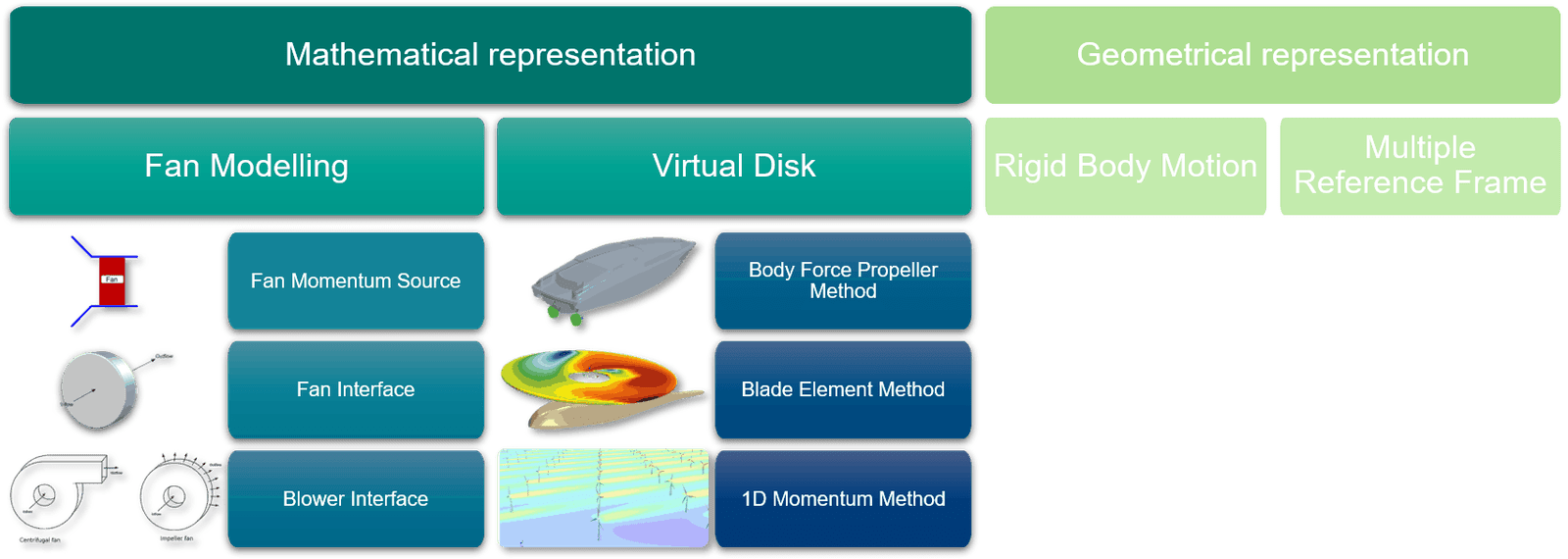
Virtual Disk modelling
The Virtual Disk physics model in Star-CCM+ works to significantly decrease the cost of these computations by representing a propeller s influence on a fluid as momentum sources. Again, we do not model the actual geometry but it´s effect on the flow field by adding a source term the momentum equations which is distributed over the virtual disk. Virtual Disk is superior Fan Modelling as it is more flexible to position and accounts for more details of the actual geometry. Since no geometry is present, the visualization of the Virtual Disk can be achieved by adding a Threshold Derived Part for the Virtual Disk field function Indicator of Virtual Disk, as shown in the figure below and discussed here.
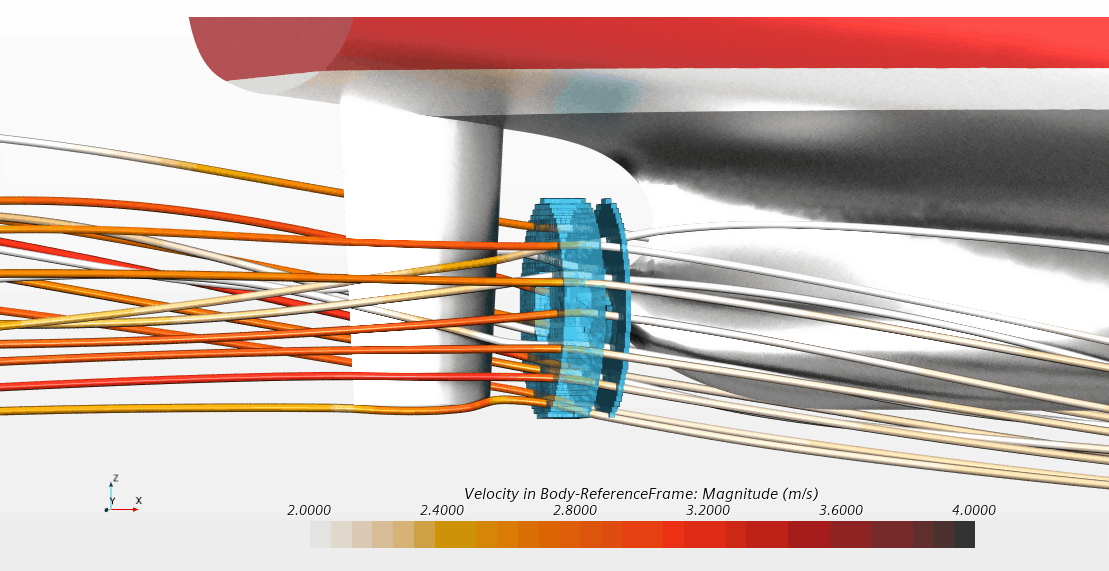
Body Force Propeller Method
The Body Force Propeller method models the flow field interaction of a marine application, in particular the hull of a ship and the propeller. It is useful if you do not require the detailed flow field around the propeller and can be used as a part of DFBI (Dynamic Fluid Body Interaction). This, most importantly, allows you to estimate the correct propulsion specification by running a self-propulsion simulation. Of course, the propeller performance is to be specified in marine propeller typical format, as a function of the advanced ratio J. Thrust and torque coefficients as well as the propeller efficiency are given by a polynomial or a file table. The actual values at the operation point are computed using linear interpolation.
The setup is straight forward with no need for an interface or a dedicated region, respectively. Cells in your domain are assigned for the virtual disk (to introduce the body forces) and -optional- for the inflow (to extract the induced inflow). It is important to consider the recommended dimensions according to the manual. The selection of a proper disk thickness is discussed in this knowledge article: https://support.sw.siemens.com/knowledge-base/KB000022217_EN_US
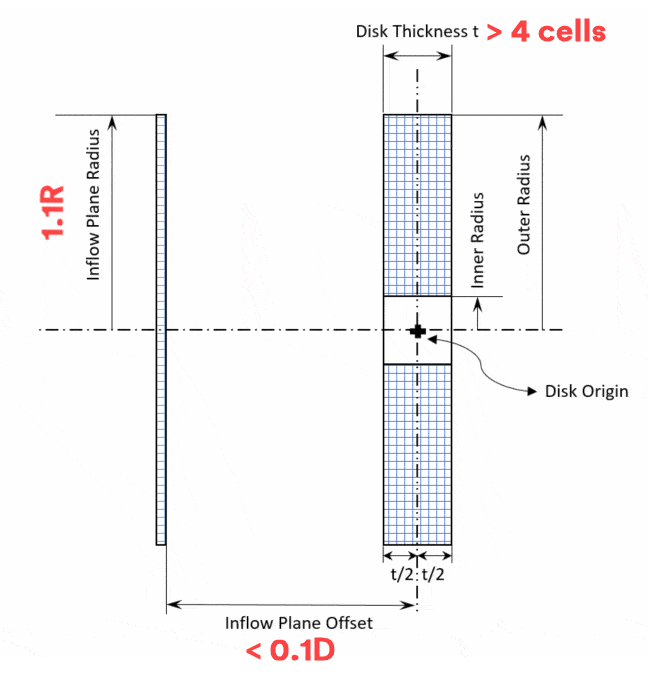
One relatively new option in Body Force Propeller method is the correction for the propeller induced effects on the inflow velocity. The method modifies the advanced ratio and source terms for thrust and torque as described in https://www.marinepropulsors.com/proceedings/2015/TB2-2.pdf
Blade Element Method
The Blade Element Method within the Virtual Disk model was primarily designed to model the effects of a helicopter rotor on the surrounding flow field and is ideal for external aerodynamics applications. Like the previous method are we determining cells in our volume mesh where the action of the rotor. The geometry is not explicitly resolved but described by the aerodynamic behavior of the blade in terms of lift and drag coefficients (obtained for the corresponding two-dimensional cross-section of the blade). Which can vary along the radius as shown in the figure below.
The source term is calculated per blade element of the rotor on an interpolation grid and then transferred to the finite volume mesh. Each element is thereby associated with a number of cells on the finite volume mesh. Consequently, the selected mesh size has an important effect on the accuracy of the simulation. A mesh sensitivity study is therefor recommended since the result is case depended. You can find two knowledge articles addressing this topic (https://support.sw.siemens.com/knowledge-base/KB000022105_EN_US, https://support.sw.siemens.com/knowledge-base/KB000020797_EN_US)
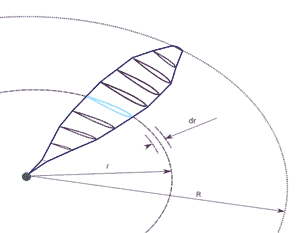
Unlike the Body Force Propeller method is the Blade Element Method time accurate. This means approach tracks the motion of the blades and adds source terms only to the volume cells which correspond to the location of the blades.
1D Momentum Method
The 1D Momentum method is design to model the effect of wind turbines convert the wind energy into mechanical energy of rotation. It is in particular restricted to the so-called Horizontal Axis Wind Turbine (HAWT). The underlying method (actually 1D Momentum Theory) relates back to Rankine-Froude Theory for marine propulsor and converts the translational energy of the fluid into rotational energy by decreasing the velocity (due to the thrust force, T). Since the mass flow is the same at any downstream plane the streamlines must expand.
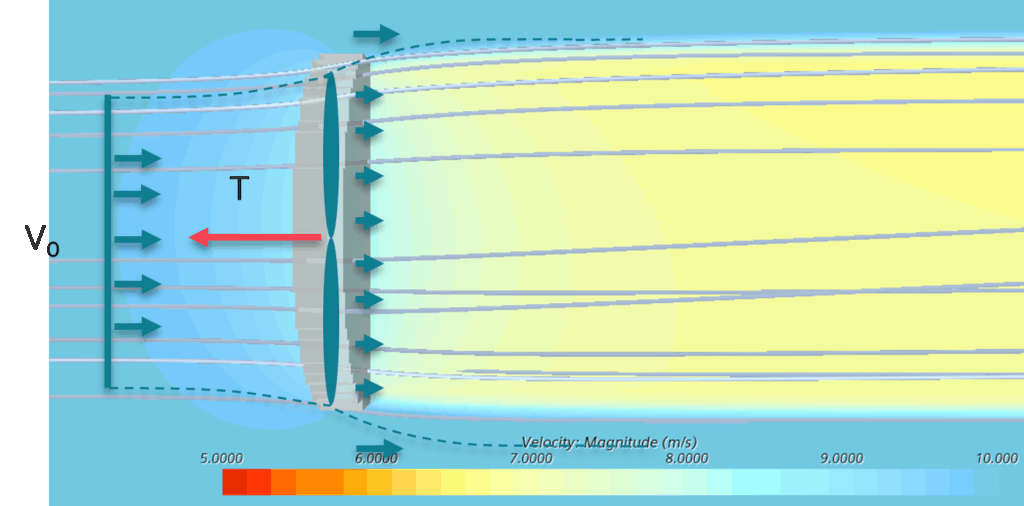
The performance curves required to mimic the effect of a wind turbine are given as thrust coefficient and the power as functions of wind speed. An inflow velocity plane is used to compute the volume-averaged which is like the Body Force Propeller method. The inflow velocity plane is placed upstream of the wind turbine and the same dimension recommendations apply. This upstream velocity is used to extract the thrust coefficient and the power values from the performance curves and to calculate the source term. In case the averaged inflow velocity falls out of the given performance curve, the 1D momentum source term is taken out of the computation of the momentum equations. This removal of the source term mimics the effect of the cut-in and the cut-out speed.
I hope this has given you a brief introduction to the possibilities of simulating rotating flow within Simcenter Star-CCM+. More information can be obtained in the documentation. And as usual, if you have any questions, do not hesitate to reach out at support@volupe.com, we would like to know how you use this method!
read also:
Directed meshing in Simcenter STAR-CCM+
Rotating Flow part 1
Marine simulation with Simcenter STAR-CCM+
STARCCM+ version 2020.3 news-Part 3
Simcenter STAR-CCM+ version 2020.3 news part5